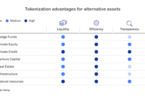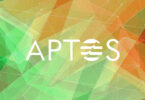Today, the cross-industry Token Taxonomy Initiative (TTI) published its first framework, with guidelines and standardized token ‘recipes’. The Token Taxonomy Framework (TTF) V 1.0 enables enterprises to create blockchain-neutral tokens with comprehensive definitions and terms.
The TTI was launched in April by blockchain consortium Enterprise Ethereum Alliance and includes high profile participants Accenture, Adhara, Banco Santander, Clearmatics, ConsenSys, Digital Asset, EY, Hedera Hashgraph, IBM, Intel, ioBuilders, Itau, J.P. Morgan, Komgo, Microsoft, R3, and Web3 Labs. Less than a month ago, the group worked on definitions for a token-based incentivization system.
Now, the TTI has released its first framework. Along with standards and definitions of tokens, it includes business-ready token specifications or ‘recipes’. These are based on real use cases, such as Digital Asset’s smart contract tokenization and Microsoft’s Azure Blockchain Tokens.
“Whether it’s a ticket, supply chain documents, stocks, property titles, loyalty points, or other as-yet unthought-of blockchain-based products and services, token use should be able to flow across platforms,” said Marley Gray, TTI chair, EEA Board member, and principal architect at Microsoft.
He continued: “If we want to take full advantage of what collaborative platforms have to offer, cross-platform transactions have to be able to communicate with one another. Standards are where that starts, and this Framework makes unlocking the untapped potential of tokens on the blockchain possible.”
Indeed, organizations need no coding or token experience to utilize the TTF. As Gray explained: “a business user or consortium can select a base type of token and choose from contributed lists of behaviors and properties and assign them to the token, just as you might drag and drop icons on a screen.”
“The framework enables a business person to create a token visually using a design tool without writing any code whatsoever and allows them to tell developers, ‘I want one of these,’” he added.
Hedera Hashgraph’s Brett McDowell stated: ““We are seeing more enterprises take a keen interest in developing their own solution-specific tokenization schemes across a number of industries and use cases. …These standards will enable custom token deployment across next-generation public ledgers that can meet increasingly demanding requirements for stability, security and performance in this emerging market.”
A Gartner report predicts that tokenization is a crucial step in unlocking blockchain’s true potential. Meanwhile, KPMG published that tokens could transform customer loyalty programs.
“While various implementations and taxonomies exist for tokens, the industry is currently lacking a venue for all participants to work together to describe how tokens can eventually interoperate across the multiple and disparate systems that make up a typical enterprise infrastructure,” explained Ron Resnick, the EEA’s Executive Director.
“The TTF is now that venue. Plus, the EEA will be launching an EEA Token Working Group that will leverage the TTF framework to extend our global standards work,” he said.







